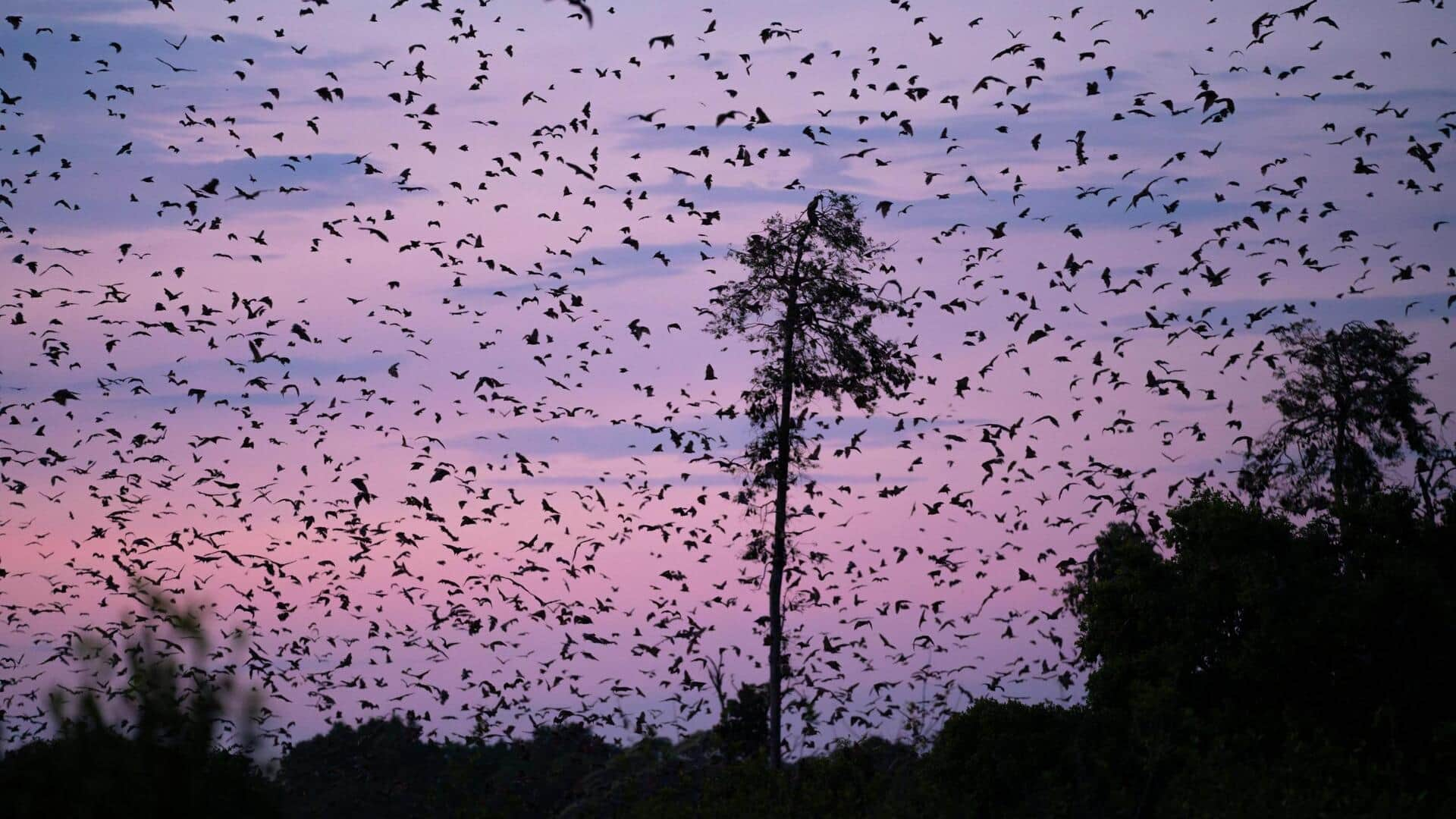
For wildlife enthusiasts: Don't miss this epic destination
What's the story
Zambia's Kasanka National Park is famous for the largest mammal migration on the planet. Every year, millions of fruit bats flock to the park's forests, creating a spectacular sight for wildlife lovers. The migration takes place between late October and December, making it the perfect time for visitors to witness this natural wonder. The event is not just a sight to behold but also an important ecological phenomenon that plays a key role in the region's biodiversity.
#1
Timing and location of migration
The migration of fruit bats occurs annually from late October to December. During this period, the bats converge on the park's swamp areas where they find plenty of food and shelter. The timing of the migration is dictated by seasonal changes and availability of food sources. Visitors can witness this phenomenon by visiting the park during these months when the bat population peaks.
#2
Ecological significance of bats
Fruit bats play an essential role in maintaining ecological balance by pollinating plants and dispersing seeds. Their migration aids in sustaining various plant species within the park and surrounding areas. This natural process contributes to forest regeneration and biodiversity conservation efforts in Zambia's ecosystems.
#3
Viewing opportunities for visitors
Visitors to Kasanka National Park can enjoy several viewing opportunities to witness this incredible migration up close. Guided tours are available, providing insights into bat behavior and ecology from knowledgeable guides. Early morning or late afternoon are ideal times for optimal viewing conditions when the bats are most active.
Tip 1
Tips for experiencing bat migration safely
To ensure a safe and enjoyable experience while witnessing bat migration in Zambia, it is advisable to wear comfortable clothing suitable for warm weather conditions. Carry binoculars or cameras with zoom lenses to capture distant wildlife without disturbing them. Respect park rules by staying on designated paths and minimizing noise levels so as not to disrupt wildlife activities during your visit.